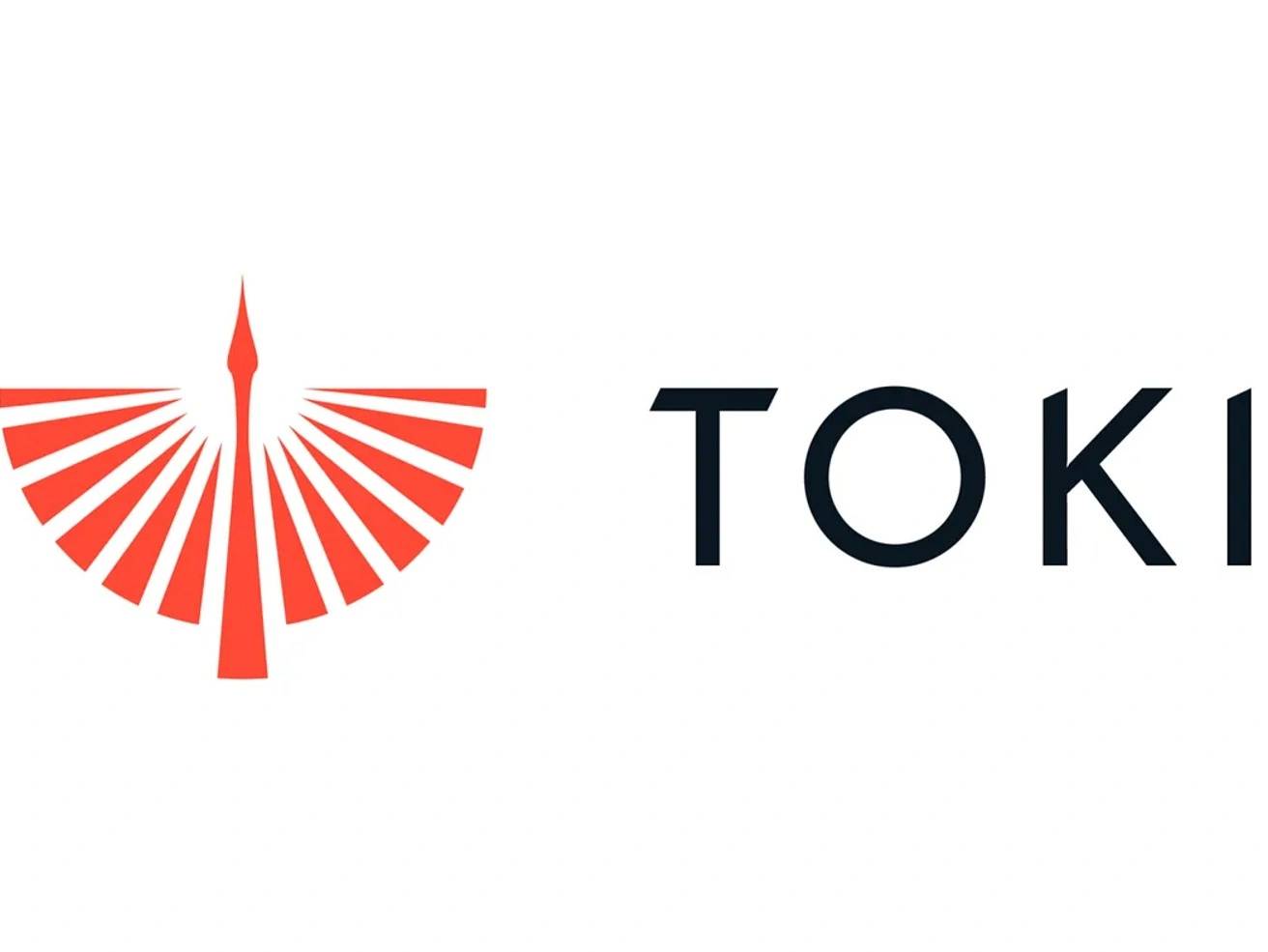Subscribe to wiki
Share wiki
Bookmark
TOKI
The Agent Tokenization Platform (ATP):Build autonomous agents with the Agent Development Kit (ADK)
TOKI
TOKI is a cross-chain bridge that aims to facilitate secure token transfers through IBC with Multi-Prover Security. It seeks to connect networks like Ethereum, BNB Chain, and Cosmos, using TEEs, ZKPs, and a Unified Liquidity Pool to enhance efficiency and security. [1][2]
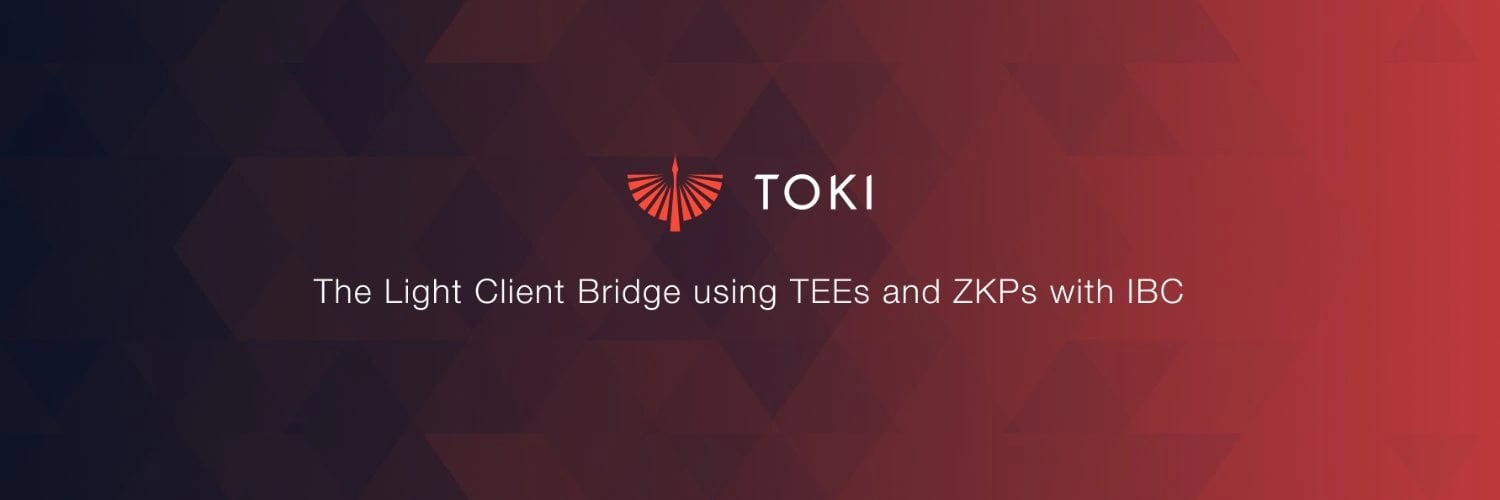
Overview
TOKI, founded by Daiki Ishikawa, aims to develop a secure cross-chain infrastructure using IBC and Multi-Prover Security. Since 2020, it has worked with Datachain to support IBC development and explore use cases with financial institutions. Launched in 2023, TOKI seeks to establish "The Internet of Blockchains."
The platform aims to enable single-click cross-chain transfers without wrapped tokens, utilizing unified liquidity pools to minimize risks and enhance efficiency. It focuses on security through TEEs, ZKPs, and Light Client Proxy, while promoting compatibility with decentralized applications for payments, transfers, and other functionalities.
The TOKI Testnet launched on September 2, 2024, aiming to improve platform stability through two phases: Testnet for Transfer and Testnet for Transfer and Pool.[1][2][3][4]
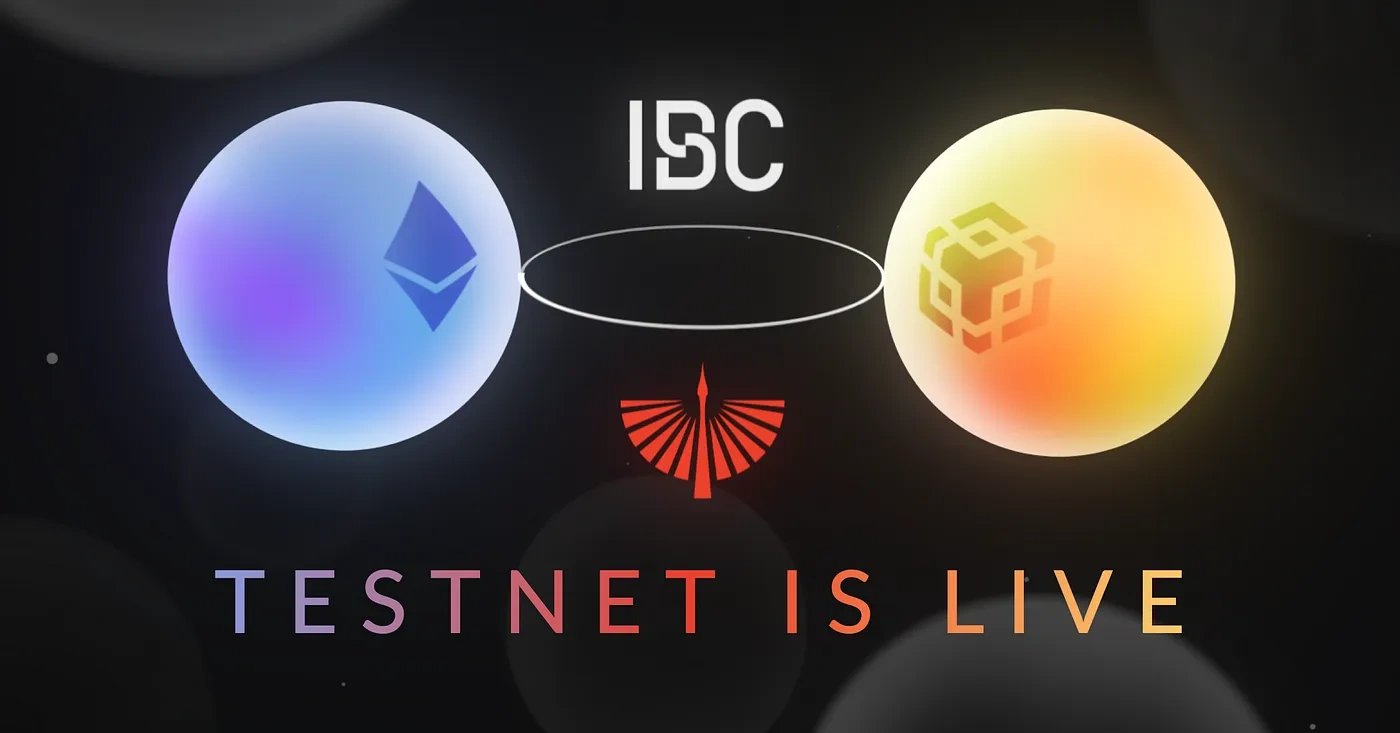
Features
Multi-Prover Security
TOKI integrates multi-prover security with IBC, aiming to provide secure and efficient cross-chain messaging. IBC serves as an open and permissionless standard for transactions, supported by a broad developer community and a record of reliable operation.
The multi-prover model combines TEE for proof generation, ZKP for dispute resolution, and plans to include economic security for greater reliability. The Light Client Proxy (LCP) facilitates configuration, reduces operational costs, and supports decentralization, aligning with TOKI’s goal of enhancing inter-chain connectivity.[1][5]
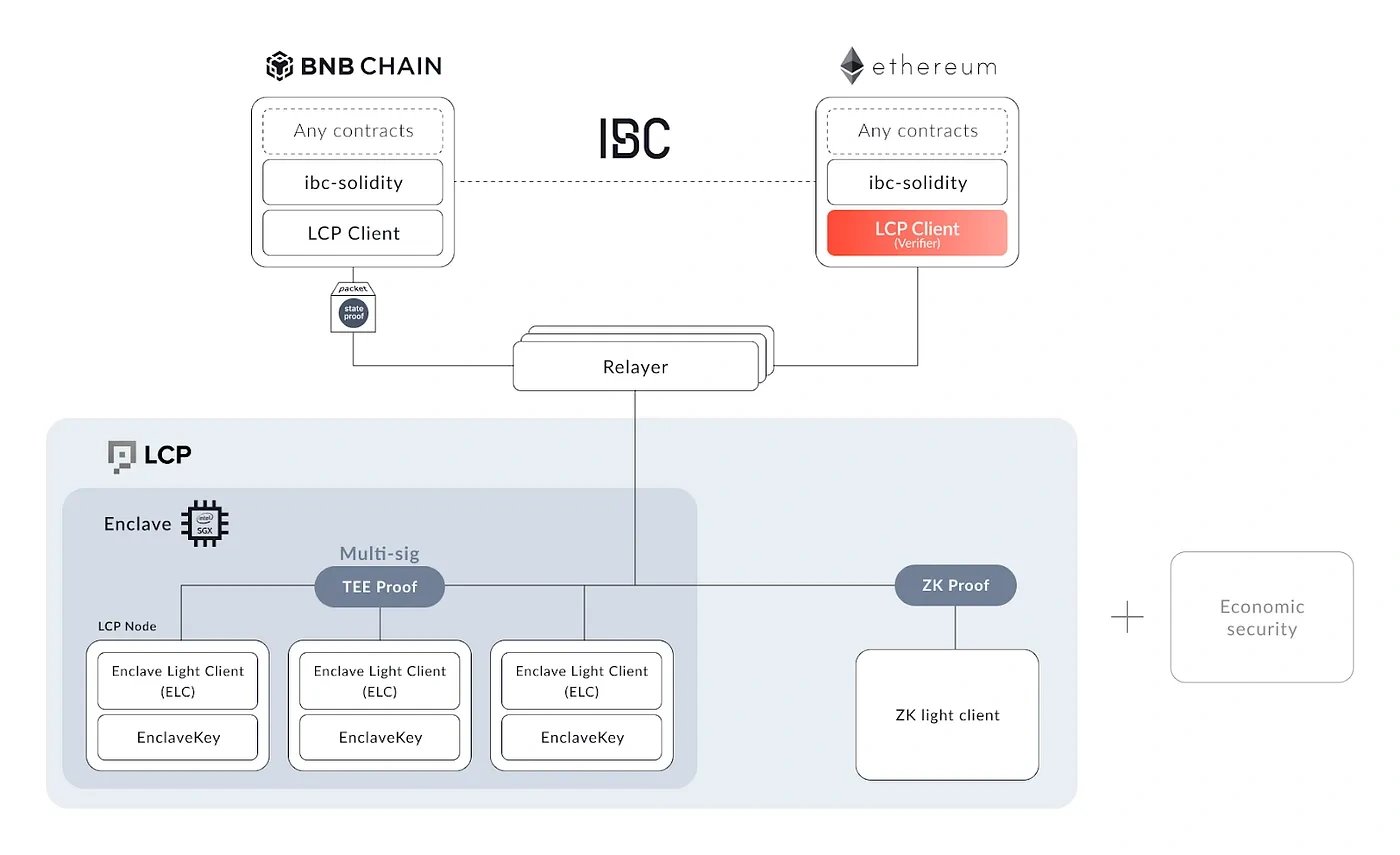
Unified Liquidity Pool
TOKI aims to simplify native token transfers across blockchains through a single-sided unified liquidity pool. This feature eliminates the need for wrapped tokens, allowing for one-click transfers with guaranteed finality. Liquidity providers are intended to benefit from minimized risks, such as the absence of impermanent loss, along with enhanced capital efficiency and security.
The system connects liquidity pools across different blockchains, relying on TOKI's messaging layer for seamless operation. TOKI tokens are used to encourage liquidity provision and support the development of the ecosystem.[5]
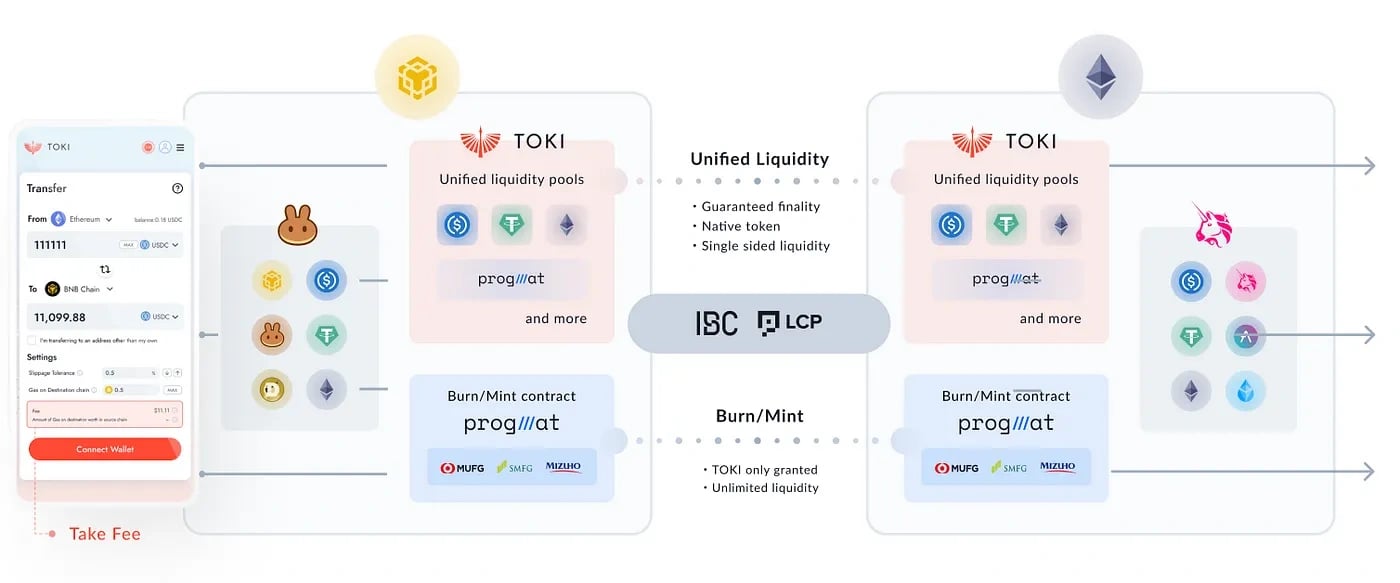
Third-Party App Layer
TOKI’s infrastructure aims to provide high composability in both messaging and liquidity layers, simplifying cross-chain transactions for various use cases, such as swaps, transfers, NFT purchases, and lending. It also supports third-party app integration, allowing external developers to build on the platform.
For example, through integration with Progmat, TOKI facilitates stablecoin transfers across chains. This approach seeks to promote innovation and increase potential revenue. [1][4]
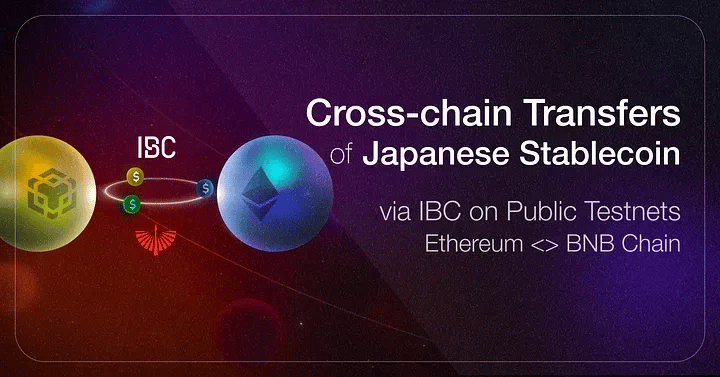
Use Cases
TOKI aims to offer a secure infrastructure for cross-chain transactions, facilitating various use cases through integration with decentralized applications (DApps):
- Cross-chain swaps: Users can swap tokens across different chains, using stablecoins as a bridge currency for token pairs.
- Cross-chain purchases: Users can purchase NFTs on one chain using tokens from another chain.
- Cross-chain lending: Users can deposit tokens from one chain into a lending protocol on another chain.[6]
Tokenomics
TOKI employs three token types: LP tokens, TOKI tokens, and veTOKI tokens, following models used by other decentralized exchanges.
- LP token: Issued as a reward for providing liquidity, with holders receiving a portion of protocol fees.
- TOKI token: Distributed based on LP token deposits, with an aim to offer fee discounts for future swaps.
- veTOKI token: Distributed for staking TOKI tokens, with voting power determined by the length of the staking period.[6]
Partnerships
Since its launch, TOKI has established various partnerships aimed at enhancing its ecosystem:
- Financial Institutions: TOKI has collaborated with Progmat to facilitate Japanese-regulated stablecoin issuance.
- Foundations: A partnership with the Interchain Foundation focuses on expanding the Interchain Stack and fostering community engagement.
- IBC Tech Providers: TOKI works with Union, Composable Finance, Confio, Landslide, and Strangelove to strengthen the interoperability and functionality of their respective projects.
- L1 Blockchains: TOKI engages with Noble, XION, Oasys, and others to support third-party integrations and expand blockchain compatibility.[5]
See something wrong?
The Agent Tokenization Platform (ATP):Build autonomous agents with the Agent Development Kit (ADK)
